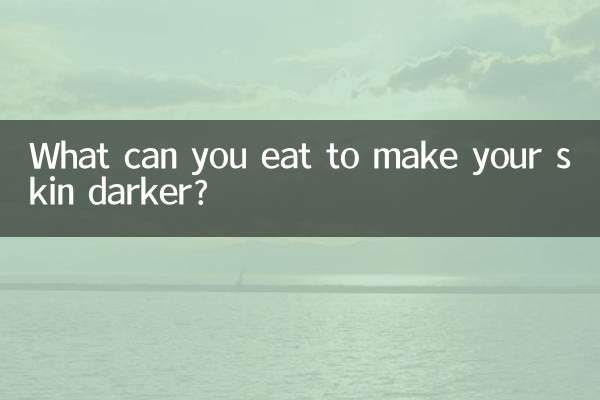What’s the best thing to eat for aplastic anemia: scientific dietary guidelines combined with hot topics
In recent years, aplastic anemia (referred to as "aplastic anemia") has become a hot topic of public concern due to its high incidence and complexity of treatment. This article combines the hot health topics on the Internet in the past 10 days to sort out dietary suggestions for aplastic anemia and help patients treat it through scientific diet.
1. Core principles of diet for aplastic anemia

Patients with aplastic anemia need to focus on the three goals of replenishing blood, enhancing immunity and preventing infection. The diet should be based on the following principles:
| in principle | Specific instructions |
|---|---|
| high protein | 1.5-2g/kg body weight daily to repair hematopoietic tissue |
| iron rich foods | Promote hemoglobin synthesis |
| vitamin supplement | Especially B vitamins and vitamin C |
| clean eating | Avoid the risk of infection |
2. Recommended food list (combined with the latest nutritional research)
| food category | best choice | effect |
|---|---|---|
| Animal blood supplement | Duck blood, pork liver, beef | High heme iron absorption rate |
| plant-based iron supplement | Black fungus, seaweed, spinach | Need to be combined with vitamin C to promote absorption |
| protein source | Eggs, fish, whey protein | High quality protein utilization |
| immune enhancement | Mushrooms, kiwi, blueberries | Contains polysaccharides and antioxidants |
3. Suggestions on recent hot topics
1.“Prepared Meal Health Controversy”: Patients with aplastic anemia should avoid prepared dishes because additives may affect hematopoietic function. It is recommended to choose fresh ingredients.
2.“Raw Food Risks”: Recent cases of listeria infection remind you that all ingredients must be heated thoroughly and avoid raw and cold foods such as salads.
3."Traditional Chinese Medicine Diet Therapy Craze": You can add red dates, wolfberry and other medicinal and edible ingredients in appropriate amounts, but you need to avoid blind supplementation that affects regular treatment.
4. Three-meal combination demonstration (adjusted according to the Dietary Guidelines for Chinese Residents)
| Meals | Recommended combination | nutritional analysis |
|---|---|---|
| breakfast | Red dates and millet porridge + boiled eggs + oranges | Provide iron + protein + vitamin C |
| Lunch | Tomato stewed beef brisket + garlic lettuce + multigrain rice | Heme iron + dietary fiber |
| dinner | Crucian carp tofu soup + stir-fried pork liver + sweet potato | High-quality protein + vitamin A |
5. Foods that need to be strictly avoided
1. Caffeinated beverages: affect iron absorption
2. High-fat and greasy foods: increase the burden on digestion
3. Unpasteurized dairy products: risk of bacterial infection
4. Pungent food: may cause bleeding
6. Latest suggestions from experts (derived from recent interviews with top tertiary hospitals)
1. Using cast iron pans when cooking can increase the iron content in food
2. There should be an interval of more than 2 hours between taking iron-supplementing foods and calcium supplements.
3. When hemoglobin is <60g/L, medical nutrition treatment should be provided
Conclusion:Dietary management of aplastic anemia requires individualized adjustments, and this article suggests that it should be combined with clinical treatment plans. The recent discussion on "Inclusion of nutritional therapy in medical insurance" reminds patients that they can consult a professional nutritionist to develop a personalized plan. Remember, scientific diet is an important auxiliary to treatment, but it cannot replace regular medical treatment.

check the details

check the details